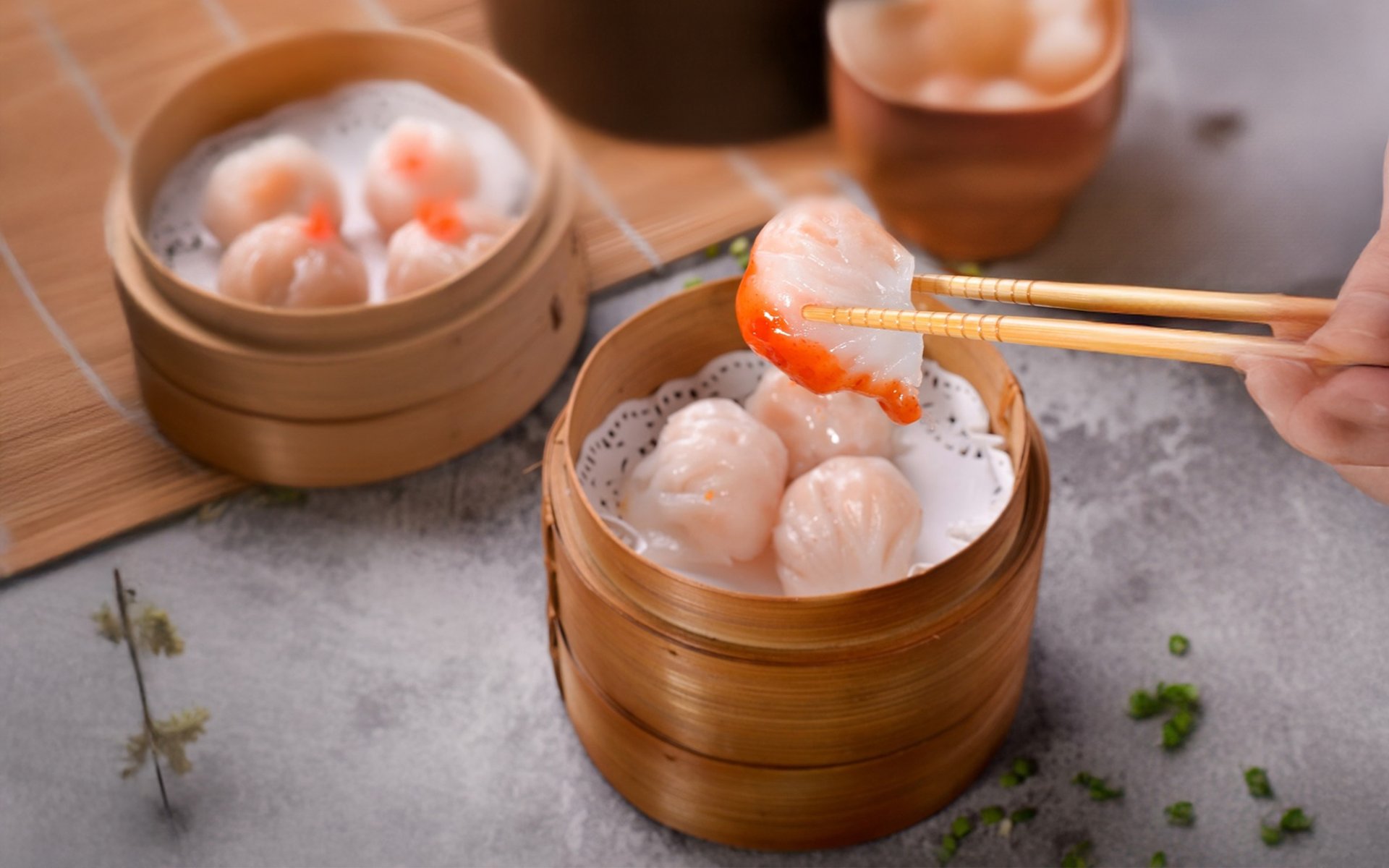Har Gow

Har Gow (蝦餃) is a Chinese dim sum snack made from a blend of wheat starch and tapioca starch. When cooked, the wrapper becomes translucent and chewy, allowing the filling to be seen. It's typically filled with minced shrimp, combined with bamboo shoots, spring onions, sesame oil, salt, white pepper, and egg white. Today, Rimping Supermarket takes you on a deep dive into the story of this popular dim sum dish.
Origins in Guangzhou: The Heart of Dim Sum Culture (Early 20th Century)
The origin of Har Gow dates back to the early 20th century in Guangzhou, the capital of Guangdong province in southern China. During this period, Guangzhou was a vibrant cultural and culinary hub. Numerous teahouses here would serve small Chinese snacks called dim sum (meaning "touch the heart") along with tea to their guests, a practice that flourished into a rich culinary tradition.
The story of Har Gow began with a dim sum chef in a teahouse who sought to create a dumpling to showcase fresh seafood. Given the abundance of shrimp in the Pearl River area (the third longest river in China), the chef minced shrimp and combined it with bamboo shoots, spring onions, sesame oil, salt, white pepper, and egg white. This mixture was then wrapped in a thin dough made from wheat starch and tapioca starch, shaping it to resemble a seashell or a crescent moon. It was named Har Gow, which literally translates to Shrimp Dumpling in Cantonese.
The Art of Making Har Gow: Thin Wrappers, 13 Pleats
Making Har Gow is considered an art in Cantonese cuisine because it requires more meticulous care than other dim sum varieties. Har Gow is made with a thin wrapper that must be translucent enough to reveal the filling inside, yet strong enough to hold the filling without tearing. It is said that a good Har Gow has a thin, translucent wrapper showcasing the juicy, springy shrimp filling. Traditionally, it should be folded with 13 pleats and served in a bamboo steamer basket, accompanied by light soy sauce, dim sum dipping sauce, or chili oil, along with hot tea.
After its introduction, Har Gow quickly became a favorite dim sum dish for both Guangzhou locals and tourists. As Cantonese people began to migrate to various parts of the world, they brought their culinary traditions with them. This led to Har Gow becoming known throughout China and globally.
Global Spread and Evolution: Har Gow on the International Stage (Mid-20th Century - Present)
By the mid-20th century, dim sum restaurants began appearing in major cities worldwide, especially in regions with significant Chinese communities, such as Hong Kong, Singapore, and San Francisco.
In these countries, Har Gow has been adapted into many variations. Chefs have experimented with new fillings like scallops, lobster, squid, or even incorporating truffle oil in some recipes to cater to diverse tastes. However, despite the variety of fillings, the basic wrapper and folding techniques for Har Gow remain unchanged.
Today, Har Gow is one of the most popular dim sum dishes and comes in several types:
- Shrimp Har Gow (蝦餃): The classic Har Gow with a pure shrimp filling.
- Mixed Har Gow (混蝦餃): Har Gow with a filling of shrimp mixed with minced pork.
- Seafood Har Gow (海鮮餃): Har Gow with a filling of shrimp mixed with squid.
- Vegetarian Har Gow (素餃): Har Gow with a vegetable filling.


